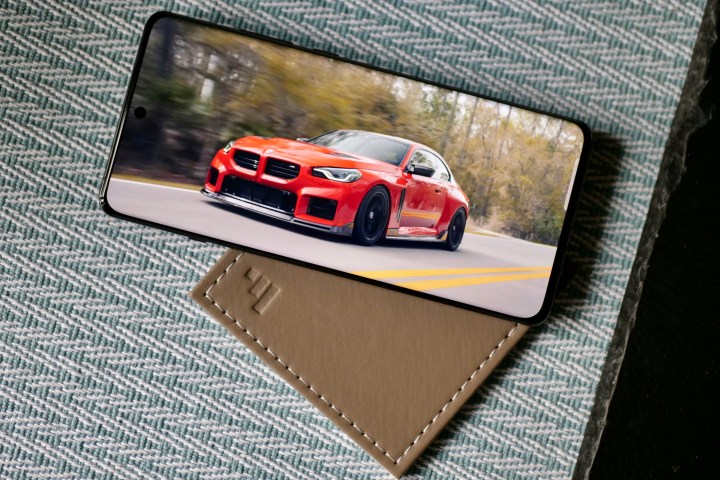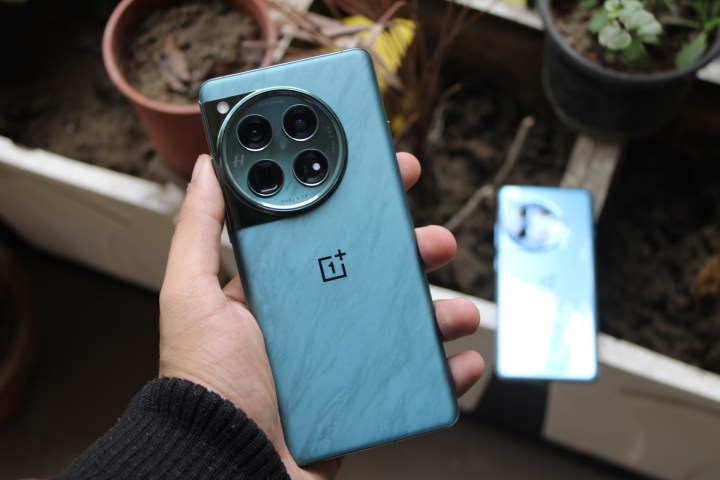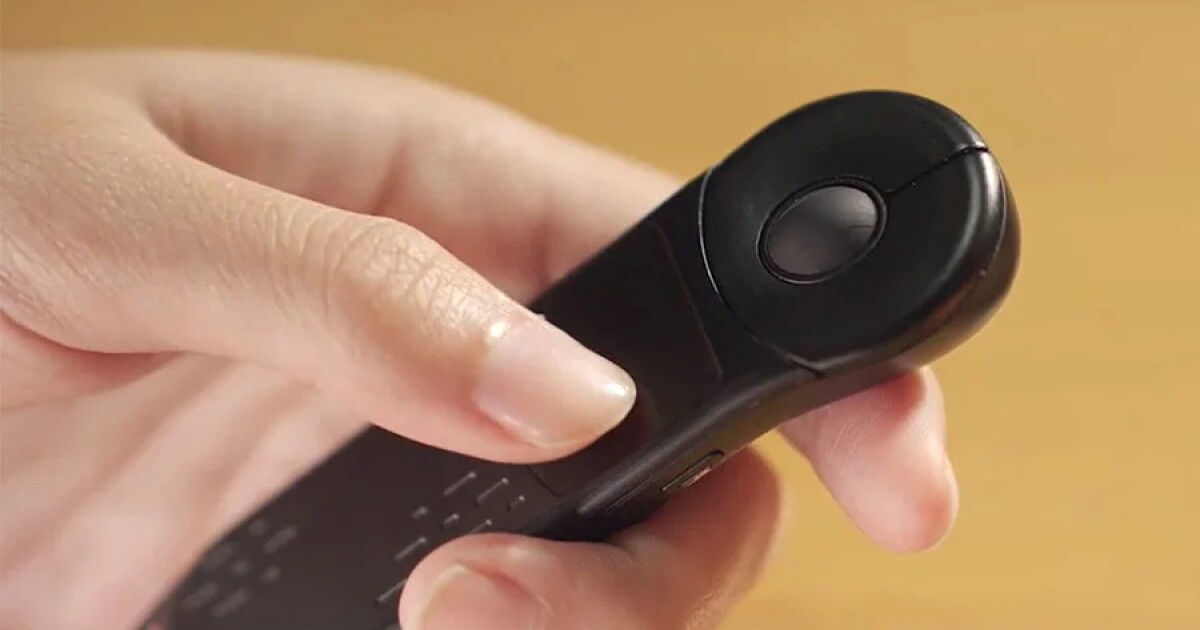This iPhone 16 Plus is the cheapest “big” iPhone from the new iPhone 16 range. It offers a nice balance between price, power, and features. However, it’s not the only option available in this space. The OnePlus 12 is perhaps the Android-based phone that’s closest to the iPhone 16 Plus when you take features and specs into account. Despite showing some age, it remains one of our favorite phones of the year. As such, it’s a strong competitor for Apple’s latest big iPhone.
What do these smartphones have in common? Where are the key differences? Which should you buy? It’s time to find out.
Apple iPhone 16 Plus vs. OnePlus 12: specs
| iPhone 16 Plus | OnePlus 12 | |
| Dimensions | 160.9 x 77.8 x 7.8 mm (6.33 x 3.06 x 0.31 inches) | 164.3 x 75.8 x 9.2 mm (6.47 x 2.98 x 0.36 inches) |
| Weight | 199 grams (7.03 ounces) | 220 grams (7.76 ounces) |
| Display | 6.7-inch Super Retina XDR OLED (60Hz)
2796 x 1290 resolution at 460 pixels per inch |
6.82-inch LTPO AMOLED (Dynamic 1-120Hz)
3168 x 1440 resolution at 510 pixels per inch |
| Durability | IP68 | IP65 |
| Colors | Black, white, pink, teal, ultramarine | Flowy Emerald, Silky Blac |
| Processor | Apple A18 | Qualcomm Snapdragon 8 Gen 3 |
| RAM and storage | 8GB with 128GB, 256GB, or 512GB | 12GB/256GB, 16GB/512GB |
| Software and updates | iOS 18 upgrades for at least five years | Android 14 with OxygenOS 14, OS updates for four years, security for five years |
| Rear cameras | 48-megapixel primary
12MP ultrawide |
50MP primary
48MP ultrawide 64MP periscope telephoto |
| Front camera | 12MP | 32MP |
| Battery and charging | 4,674mAh
27W fast charging 25W MagSafe charging 15W Qi2 wireless charging |
5,400mAh
Fast charging 100W (80W in the U.S.) Fast wireless charging (50W) Reverse wireless charging (10W) |
| Price | From $899 | From $799 |
| Review | Apple iPhone 16 Plus | OnePlus 12 |
Apple iPhone 16 Plus vs. OnePlus 12: design
This year’s iPhone 16 Plus (and its little brother, the iPhone 16) are noted for having some significant design changes over last year’s models. This starts with the new colors, such as ultramarine, teal, and pink, that join more traditional black and white versions. Once again, Apple uses color-infused matte glass here, which the company claims is produced using an improved infusion process that creates more vibrant colors. This is true; compared to the iPhone 15 and iPhone 15 Plus, there are no more washed-out pastels.
The iPhone 16 Plus also includes a new dual camera layout that looks much like the one on the iconic iPhone X. It’s vertical and pill-shaped and will turn heads because it’s beautiful. You’ll also notice the Action and Camera Control buttons on either side of the phone. The first was exclusive to the iPhone 15 Pro series, while the second is brand new across the entire iPhone 16 lineup.
The Action button is a customizable physical button located on the left side of the device, below the volume buttons. It lets you quickly access various functions with a single press or press and hold. For example, you can use the button to turn on the phone’s flashlight or easily access the Control Center. Another option is activating Shazam to identify music playing around you and more.
The Camera Control button is located on the right side of the handset. It offers fast and intuitive control over the iPhone camera, similar to the shutter button on a traditional camera. This button, which has capacitive capabilities, launches the Camera app with a single click and provides various controls such as zoom, exposure, and depth of field with a light double-click.
Aside from the design changes, some aspects of the iPhone 16 Plus have stayed consistent across generations. The phone still features a 6.7-inch display with bezels the same size as those of the previous year’s model, and it is once again constructed with aluminum. We’ve been impressed with the iPhone 16 Plus’s handling. Like the iPhone 15 Plus, but not like the iPhone 14 Plus, the new model is comfortable and easy to hold despite its larger size compared to the iPhone 16.
OnePlus is known for its unique product designs, and that trend continues with this phone. It comes in two colors: Silky Black and Flowy Emerald. Both are made of aluminum alloy and glass, offering a frosted back glass with a smooth matte finish that doesn’t attract fingerprints. The Flowy Emerald option also has a marbled, wavy pattern and eye-catching shimmer on the back. Unfortunately, that pattern does nothing to make the phone easier to hold. We found it to be more slippery, which is something to remember.
The OnePlus 12 has traditional buttons and sliders on the sides: A power button, volume buttons, and an alert slider.
The OnePlus 12 is gorgeous, but the iPhone’s new features really put it a step above for us.
Winner: Apple iPhone 16 Plus
Apple iPhone 16 Plus vs. OnePlus 12: display

The iPhone 16 Plus and the OnePlus 12 feature good displays, but one is better.
The iPhone 16 Plus has a Super Retina XDR OLED display that is slightly smaller than the OLED on the OnePlus 12 and has a lower pixel density. It has a 60Hz adaptive refresh rate, while the OnePlus 12 offers a 120Hz refresh rate for smoother motion between screens. The iPhone 16 Plus also has a slightly lower peak brightness than the OnePlus 12.
Unlike its iPhone Pro cousins, Apple’s product also lacks an always-on display. This is a feature the OnePlus 12 does have.
On the positive side, the iPhone 16 Plus display supports HDR, True Tone, and Wide color gamut. On the other hand, the OnePlus 12 features an AMOLED with LTPO and a dynamic refresh rate of 1Hz to 120Hz, making it suitable for various lighting conditions. It also comes with curved edges, HDR10+, and Dolby Vision. Finally, the OnePlus 12 offers more precise control over color temperature and display settings.
Neither display is “bad,” but the one on the OnePlus is better thanks to its 120Hz refresh rate and always-on ability.
Winner: OnePlus 12
Apple iPhone 16 Plus vs. OnePlus 12: cameras

The iPhone 16 Plus and the OnePlus 12 both have impressive camera systems. The iPhone 16 Plus features a 48-megapixel Fusion sensor, a 12MP ultrawide camera at the back, and a 12MP TrueDepth front camera. The ultrawide camera’s new autofocus also introduces the ability to take macro photos, previously only available with the iPhone Pro model. The iPhone 16 Plus also includes new Photographic Styles, which offer more advanced adjustments to tone, warmth, and other image characteristics during the capture process.
Our review noted that the iPhone 16 Plus camera takes sharp, detailed, and well-balanced photos, especially in good lighting. The camera app is fast and logical and includes a decent editing suite and a fun “Camera Control” button.
However, lowlight performance is poor, with grainy shots even in dim conditions. Macro mode also needs help in anything but perfect lighting. While the “Photographic Styles” feature offers more control over the look of photos, it’s a bit fiddly to use. Lastly, the 2x optical zoom is decent, but photos lose detail when cropped further.
The OnePlus 12 boasts a 50MP primary camera, a 64MP periscope telephoto camera with 3x optical zoom, and a 48MP ultrawide camera with a 114-degree field of view. It also comes with a 32MP selfie camera, and each camera is Hasselblad-tuned for enhanced colors and clarity. Thanks to Hasselblad enhancements, reviewers were impressed by the OnePlus 12 camera’s true-to-life colors, accurate white balance, and awe-inspiring Portrait mode photos.
Ultimately, both phones can capture great photos, but the iPhone 16 Plus edges out the OnePlus 12 — it’s close though.
Winner: Apple iPhone 16 Plus
Apple iPhone 16 Plus vs. OnePlus 12: software and performance

This year’s regular iPhone 16 models have a new A18 chip with 8GB memory. Though Apple says the A18 should provide significant speed increases over the A16 Bionic chip in the iPhone 15 Plus, we couldn’t feel a considerable speed difference during our tests. The A18 is built using TSMC’s 3-nanometer process technology, which offers performance and power efficiency improvements compared to the first-generation N3 process used for the A17 Pro that’s found in the iPhone 15 Pro series.
Most people will find the A18 beneficial with the arrival of the previously mentioned Photographic Styles and upcoming Apple Intelligence tools that the company announced in June. The A16 Bionic chip does not support Apple Intelligence.
Apple doesn’t officially announce how many years of software support it offers iPhone users, but history tells us that five to six years sounds about right.
The OnePlus 12 has the best Qualcomm chip on the market, the Snapdragon 8 Gen 3, which is also found in Samsung’s flagship Galaxy S24 lineup. This chip significantly boosts processing power and improves graphics rendering and gaming performance compared to the previous chip model. Furthermore, the Snapdragon 8 Gen 3 chip is designed to support AI. Though the OnePlus 12 doesn’t offer in-depth AI features like the iPhone 16 Plus, it does support AI features provided by other companies, such as Google Gemini.
The OnePlus 12 ships with Android 14 and OxygenOS 14. It provides four years of OS updates and five for security updates.
Neither of these phones is lacking in performance. However, because the A18 is newer, we’ll give the edge to Apple’s phone. We can’t wait to see how it performs with Apple Intelligence.
Winner: Apple iPhone 16 Plus
Apple iPhone 16 Plus vs. OnePlus 12: battery life and charging

The OnePlus 12 offers a better battery life and charging experience than the iPhone 16 Plus. Its larger battery supports charging bricks up to 100 watts (80W in the U.S.). It is also compatible with fast wireless charging of up to 50W and reverse wireless charging of up to 10W.
Our testing found that the phone could last an entire day between charges, even with the highest screen settings turned on. With more moderate display settings, you can expect around two days of usage before recharging.
With the iPhone 16 Plus, you can do everyday tasks over a day without recharging, even though the battery is smaller. The phone supports 27W fast wired charging and 25W MagSafe charging. The only place it exceeds the OnePlus 12 is with wireless charging. The iPhone 16 Plus supports Qi2 wireless charging up to 15W.
The OnePlus 12 wins here comfortably.
Winner: OnePlus 12
Apple iPhone 16 Plus vs. OnePlus 12: price and availability

Both handsets are currently available for purchase. The iPhone 16 Plus starts at $899 for the 128GB model and can go up to $1,199 for the 512GB version.
The OnePlus 12 is an older device, so discounts are now available. Through the OnePlus website, you can receive up to $150 off. The regular price for the OnePlus 12 is $799 for the 128GB model and $999 for the 512GB model. As you can see, it’s less expensive than the iPhone 16 Plus, even before factoring in the expected discounts.
Apple iPhone 16 Plus vs. OnePlus 12: verdict

There’s usually a clear winner when comparing one smartphone to another. This time, however, determining the winner wasn’t easy.
The OnePlus 12 has several advantages, such as a superior display, a lower price, and better battery specifications. By contrast, the iPhone 16 Plus boasts a more modern design and an exceptional camera system. From a software perspective, it will also offer much more once Apple Intelligence is released.
If these phones were released simultaneously, we would have suggested that Apple fans select the iPhone 16 Plus and Android users select the OnePlus 12. However, the OnePlus 12 was released in January, and the iPhone 16 Plus was released in September, meaning the iPhone has the edge of feeling slightly newer, with fresher hardware.
That helps make iPhone 16 Plus the winner. It’s the newest of the two smartphones, and unlike the OnePlus 12, which will quickly be surpassed by the OnePlus 13, it won’t face a successor for nearly a year.







